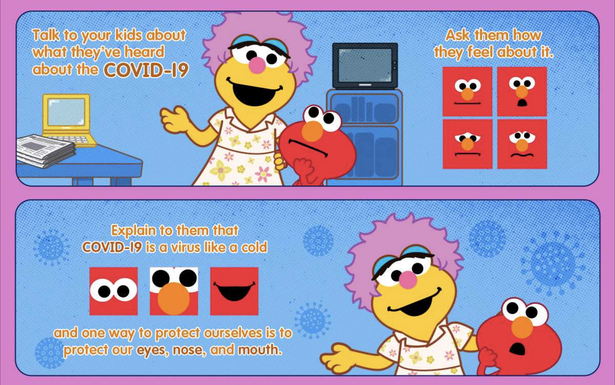|
Listen to children at every age. Meet them where they are, in the best way you know how. That will be more than enough for the moment we’re in.
In a recent letter to the community, CPET Director Roberta Kang shared her childhood memory of the Challenger Space Shuttle’s explosion, and her experience as a teacher in the classroom during 9/11. She wrote, “As educators, we are not unfamiliar with working through a crisis. We know that some crises are visible, and some are invisible. We know that some are explosive, while others are slow burns that dismantle a sense of safety bit by bit. We know that some have villains attached, and others are just, well, science.”
Our children will have strong memories of this time. They will recall what it was like when their school closed, when they had to wear masks, stand far away from people, or when open air parks were locked to visitors. Already, children are telling stories about when they went to school, “before the virus came” and what they want to bring to school, “after the virus is over.” Having conversations with children about what is happening around them and within them will support their growth and learning during this challenging time. Although COVID-19 is a new type of coronavirus, talking with children about scary situations is not new. To support our conversations, we can lean on reliable resources and use age-appropriate methods. The Centers for Disease Control and Prevention (CDC) connects their general principles for talking to children to the National Association for School Psychologists guidelines:
There are many resources online to support our conversations, and it can be overwhelming to sift through for “the perfect one.” During this time of emotional, mental, and physical overload, it’s important to remember there is no such thing as perfect. Using a reliable, science-based option will give you a starting place for you and your kids to generate questions and keep the conversation open.
Pre-K — Elementary
Support your younger students with ready-made resources from PBS. Sesame Street’s Caring for Each Other page has informative, age-appropriate videos and free e-books to support your conversation about what COVID-19 is and what we can do about it. Use their infographic to prepare for your conversation if you are feeling concerned about what to say. Older elementary students can learn more about germs and build their vocabulary by reading an article together, like What are Germs? — available in English and Spanish, with an option to listen to the article while you read.
Middle school
Middle school students are moving into a space where they question the answers they are given. Use this natural developmental stage to engage kids with inquiry cycles. Consider not only a focus on COVID-19, but a student exploration into a simple history of viruses. Whether you adapt lessons from online sources, like three lesson plans for science, math and media literacy focused on COVID-19, or you set students on a path to conduct their own research, trying out an inquiry cycle can help students gather information and generate real questions that lead to deeper exploration. Don’t have a template of your own? Give ours a try — within this template, students can share their findings in discussion groups while you use the written information as formative assessments, make adjustments to lesson plans, and provide supplemental materials or advice for students as they explore. During this time of distance learning, we have the opportunity to see what happens when self-discovery and experimentation places learning in our students’ hands. As students get more autonomy, we get to see firsthand what teaching looks like when students are at the front of the class.
High school
Students at this age can do their own research on the topic starting with the CDC’s Coronavirus-19 page (available in at least five languages), which covers symptoms, how to protect yourself, slowing the spread, daily life, and coping and is updated regularly to include subjects like cloth face coverings. As new questions arise, students can create a simple art project, like an infographic. With them, you can research to find answers, add them to your infographic and draw, color, or paint for emphasis. If infographics aren't your thing, consider having kids create one of the following to illustrate their research:
Above all, listen to children at every age. Listen to their words. Listen to their behavior. Meet them where they are, in the best way you know how. That will be more than enough for the moment we’re in.
|
|
The Center for Professional Education of Teachers (CPET) at Teachers College, Columbia University is committed to making excellent and equitable education accessible worldwide. CPET unites theory and practice to promote transformational change. We design innovative projects, cultivate sustainable partnerships, and conduct research through direct and online services to youth and educators. Grounded in adult learning theories, our six core principles structure our customized approach and expand the capacities of educators around the world.
|
ABOUT US
525 West 120th Street, Box 182 New York, NY 10027 416 Zankel Ph: (212) 678-3161 [email protected] Our Team Career Opportunities |
RESOURCES
Professional Articles Ready-to-Use Resources Teaching Today Podcast Upcoming PD Opportunities |
COACHING SERVICES
Custom Coaching Global Learning Alliance Literacy Unbound New Teacher Network Student Press Initiative |






















